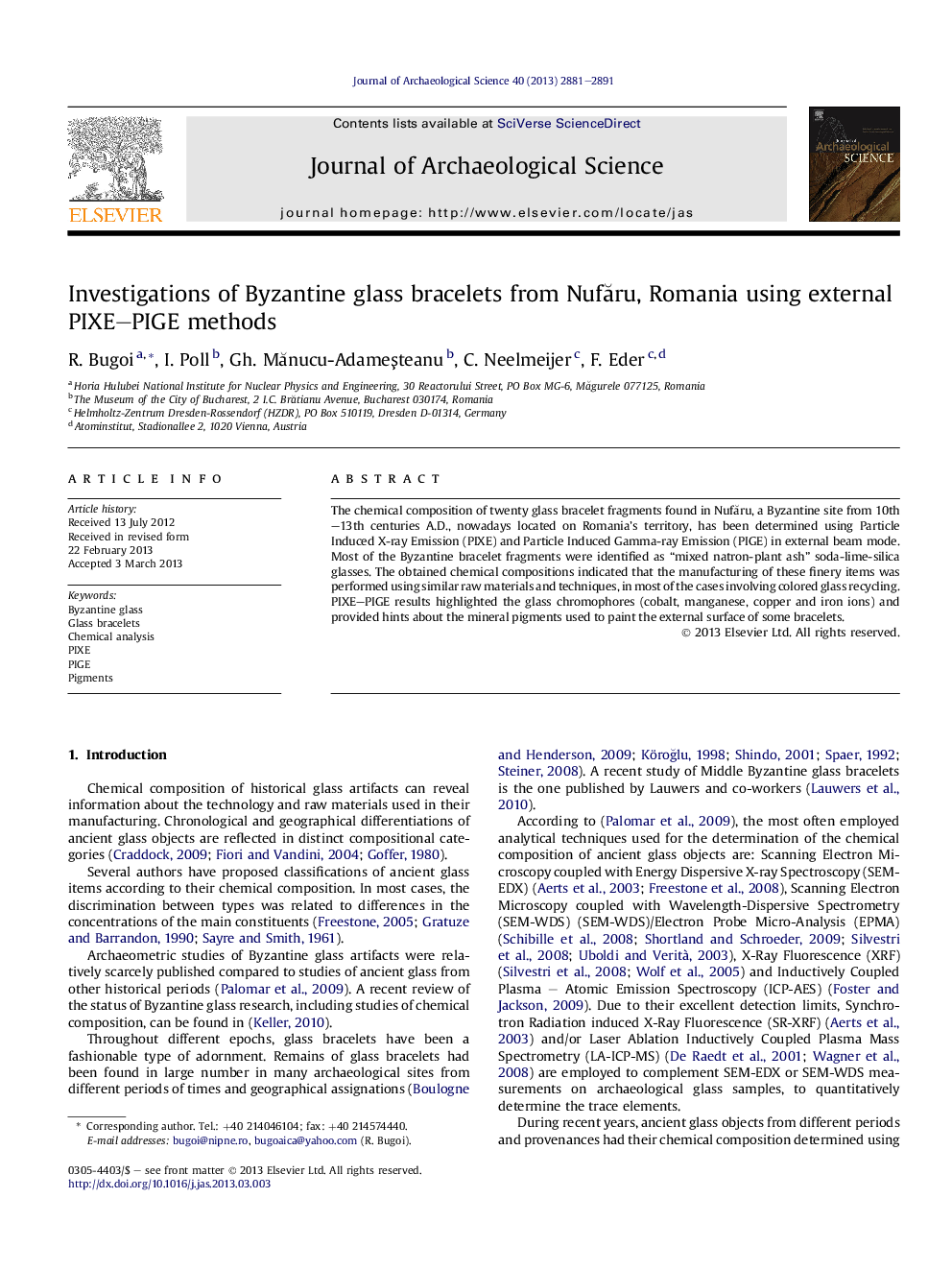| Article ID | Journal | Published Year | Pages | File Type |
|---|---|---|---|---|
| 1035491 | Journal of Archaeological Science | 2013 | 11 Pages |
The chemical composition of twenty glass bracelet fragments found in Nufăru, a Byzantine site from 10th–13th centuries A.D., nowadays located on Romania's territory, has been determined using Particle Induced X-ray Emission (PIXE) and Particle Induced Gamma-ray Emission (PIGE) in external beam mode. Most of the Byzantine bracelet fragments were identified as “mixed natron-plant ash” soda-lime-silica glasses. The obtained chemical compositions indicated that the manufacturing of these finery items was performed using similar raw materials and techniques, in most of the cases involving colored glass recycling. PIXE–PIGE results highlighted the glass chromophores (cobalt, manganese, copper and iron ions) and provided hints about the mineral pigments used to paint the external surface of some bracelets.
► PIXE–PIGE compositional measurements of Nufăru Byzantine glass bracelets are given. ► Bracelet fragments belong to mixed natron-plant ash soda-lime type of glass. ► Compositional patterns indicate manufacture based on natron glass recycling. ► Glass chromophores (Co, Mn, Cu, Fe ions) were identified. ► Pigments used for superficial paintings are either lead-containing or silver stain.
